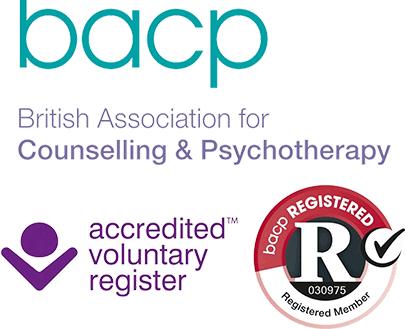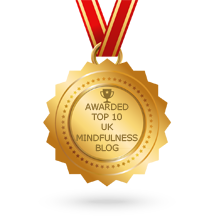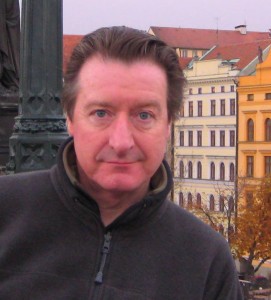The “spacesuit self”
“we wake up by letting everything within ourselves reveal itself, be felt, be experienced, be known” -Adyashanti
Thoughts come, show themselves and thoughts go. Feelings, emotions, sensations, the whole gamut of our experiencing in all its glory comes, shows itself and goes. Except this doesn’t happen; whilst showing themselves our habit is to either cling onto or push away selected bits in the showing, we “Velcro” to a set of preferences based on hidden forces inside us that like certain thoughts, emotions and sensations and don’t like others. We try to get rid of what we don’t like by distraction, suppression, distortion, denial or repression. Our minds and our hearts close down to the fullness of us.
When a particular thought-notably a sensation of pain or a dark or self critical thought-shows itself our flight or fight response activates, we try to flee or do battle with the thought. This is in a bid to distance ourselves with experiences which are unlikable. This is a rule of thumb we apply time and again to events and experiences that are external to us: if we wake up one morning to discover a huge tree trunk in our doorway we can move it, burn it, push it away, cut it up and so on until it’s long gone as if it never existed. But the way we operate inside is not the same as outside. If we experience a difficult thought or sensation and fight it or attempt to suppress it we focus on that thought. Since energy follows focus we actually feed the very thing we want to reject. And it grows, it lays down rickety little roads down the neurohighways of our brain until those rickety little roads become superhighways of habitual thoughts and feelings (even if our habit is to unconsciously suppress). Eventually the self becomes locked into following this pathway without even knowing it, and we become alienated from significant parts of ourselves.
Opening our minds and hearts to these parts of ourselves can be difficult, since essentially we probably won’t trust them-or even know them at all as us, since we’ve spent decades disowning them. Opening your mind and heart means, with kindness and compassion, tending and befriending those repudiated parts of you.
This repudiated or disowned part of yourself, the writer Tara Brach in her book True Refuge calls a “spacesuit self”-its purpose has been to provide us with a set of coping mechanisms and strategies to get by (which is fine, it’s just what happens), to help us survive-but in order to live more fully, in order to live with open minds and open hearts we need to step out of and grow beyond our mere (and often redundant) defences that bind us to small stories of who we ought, must and should be/not be and really live. We need to break out of the “spacesuit self”.
How can mindfulness help? Mindfulness, with its blend of meditative and compassionate practices creates new pathways, new rickety little roads that with practice can be developed, via the neuroplasticity of the brain into highways of insight and liberation. All those thoughts, feelings, sensations that show themselves, mindfulness practice enables us to recognise and accept them and let go of them without identifying with them; our experiencing is met with open minds and open hearts as the individual waves in our minds gradually stabilise into the ocean, the fullness of ourselves.
How do we make a start?
“Don’t go on ruminating all the time. Stop. Be silent” –Sri Nisargadatta
Step 1 is to recognise that you don’t need to live in the shoulds, musts and oughts of the past or the future; you can start right here where you are, right now.
A good start is by creating some breathing space and time in your day. This can be done in two ways, and in mindfulness we often separate this into formal practice and informal practice.
In formal practice we might create a daily meditation practice where we return to our breath and settle our minds, grounding ourselves in our bodies, coming home to ourselves, to being more fully present with what is happening in our experience as it is happening right now. This requires us not only to be more cognitively aware but also-and crucially-for us to come back to our bodies, our senses. These are often “on the mat” practices where the mindfulness meditator will sit for a prolonged period of meditation. This takes time, and that’s why it’s called practice-recognising and accepting thoughts and sensations then returning to the breath.
Informal practices are different. They are mostly about creating and sustaining stops or pauses in our day to day lives where we bring ourselves back to a sense of present embodied moment. They can be for as long as 5 minutes sitting on a bench during a break at work or for as short as 20 seconds at a stop light where we recognise where we are, accept what’s happening (“I’m here, at a red light”) and open our hearts and minds to what is, breathing into our life as it is embodied now.
Old Wounds
“Stop telling your story right now. Not later, when the story gets better or worse, but right now.” -Gangaji
For decades we maintained elaborate strategies and methods to defend ourselves, to armour ourselves up, so we could protect ourselves against the “slings and arrows of outrageous fortune” and engage well in the world.
All those old wounds can still be here but lie hidden in the deep layers of the mind, usually creating multiple ways of disconnecting not just from the world, but from ourselves. These old wounds requite tending and befriending, recognising and accepting with a curiosity and intimacy, an attitude of self compassion that allows us to become more attuned and compassionate with the world and with ourselves.
Opening our minds and hearts to old wounds can, over time, bring about a healing transformation in ourselves. But recognising old wounds can be a painful experience, we can experience feelings of lack, suffering that for years we’ve suppressed. We may even have had previous counselling or psychotherapy, and are surprised when we find that what we addressed with our therapist is still present. This is often because work with a therapist might facilitate our ability to locate and unpack the contents of lives, and it might help us to create new strategies to enable our lives, but sometimes we can subtlety reinforce the original stories by focusing on the content itself. Mindful approaches to therapy are crucially different in that they tend not to focus on the content but the nature of mind, inviting us to rest in open mind and open heart and befriend the content of our mind-after all, all memories and anticipations are not “out there” they are really us! In short, therapy can be a valid and profound way of addressing the nightmarish aspects of our lives, perhaps even making our lives quite dreamy; mindfulness wakes us up.
A sense of attention
“We are amazingly out of touch in some way or another with the present moment, the moment that is actually presenting itself to us now” –Jon Kabat-Zinn
It’s hard at times to be congruent with what we’re really thinking and feeling. Our conditioning-reinforced over decades-is an assortment of messages telling us what we must, ought, or should be feeling or experiencing, and these messages take over, essentially run the show called us. Our minds close, our hearts harden and we attach to what is “not us,” coming to internalise this substitute self as real. We’re a long way from home when our life is lead this way, a long way from a mindful experience of being congruent with, and to, our deepest truth.
But if we bring a quality of presence, a sense of attention to what’s happening whilst its happening, in our minds, bodies and hearts with acceptance, we can connect to our long disowned selves and our deepest truths; reattuned to ourselves we can release our attachments, our clinging and our aversions to us, and became kinder and more intimate to that which is our birthright.
How is it we get stuck in stories of old wounding? Robert Saplosky, author of Why Zebras Don’t Get Ulcers and Paul Gilbert, author of Compassion Focussed Therapy have some answers to this.
Zebras, when chased by predators are either okay at the end of the hunt or their concerns are long over. But at the end of the chase when they are safe they have been seen to physically shake off their trauma. In humans this flight or fight response is dealt with differently. Instead of shaking off a threatening event we tend to hold onto it, we “shake it in” and internalise the feeling. Gilbert talks of the threat-drive old brain systems in the human brain, and suggests that the old part of the brain literally gets stuck in this fight/flight response.
The missing link to mindfulness resides in our new brain-the soothing part of our brain that is only around 2 million years old. This includes our affiliative system and creative aspects of the brain; it also includes our ruminative facility. If this part of the brain is not activated we can-in the modern world of iPressure live our lives under low but chronic threat. The impact of this is summed up in pre–Buddhist story: a man is sitting by the side of the road when a large elephant comes hurtling by with a small rider. The man calls out “hey we’re you going?” and the rider yells “ask the elephant”. For most of us, our old brain-the elephant- is running the show called us.
Our conditioning has helped us to survive and adapt, it’s brought us here today, but in doing so we’ve adapted away from the truth of what we are and have taken our adapted selves as our true self. More low level trauma and pressure, more anxiety and stress reinforces this adapted self. We begin to live in a threat saturated system.
To the extent that we’re unaware of the conditioning in our threat saturated system and the beliefs we derive from it, this system becomes our future; an adapted substitute self interpreting all present and future events as anchored in the past.
The Second Arrow
“We don’t have to believe every passing thought and emotion as real and true” –Kristin Neff
There’s a two and a half thousand year old story about human reactivity attributed to The Buddha. The story passed down is called The Second Arrow. The Buddha thought of all the misfortunes that life brings to us and pictured it as if we were being shot by an arrow, driving pain deeply into us. But the Buddha said that for us this was not enough; in our reactivity a second arrow is shot, a mental arrow fired from ourselves to ourselves-this is our reaction to being hurt or distressed at the wrong end of outrageous fortune, or at times our reaction to our deeply held beliefs being challenged, and is usually made up of a fair amount of self defence, self criticism, self loathing, a feeling that we deserved what happened and in truth deserve more of the same; it’s as if it’s not enough to experience a passing pain or judgement, we need to hold onto to it, to internalise it as a kind of belief or story about us. We can also react in an angry way, lashing out-the challenged or hurt soul hurting back-though often it’s somebody else entirely we lash out to. We turn from pincushions to porcupines in seconds.
There’s a simple way of understanding this with an ARO formula
Action plus reaction equals outcome
Or, whatever happens to me, I react to and a (possibly bad) outcome is produced
However, it’s worth exploring this. Our reactivity is really all the learnt thinking, feeling and behaviour we’ve amassed over our lifetime. It’s all our cultural norms, our values, our conditioned responses, in part according to context and upbringing, in part according to being human beings, that become so embedded within us that they only take milliseconds to spring into (re)action-in that millisecond lies decades of unconscious assumptions and beliefs about what has to happen next. These are our deeply held “oughts”, “shoulds” and “musts” that command our reactions, that appear to be in control of us; it’s sometimes, in our reactivity, as if the tail was wagging the dog.
But although we cannot often control what happens to us, we can respond differently: we can, over time refuse to fire the second arrow. We can challenge our assumptions, beliefs and stories that are embedded within us so tightly, that we embody in tension, anger, in stressed and rigid sets of attitudes and beliefs that hold us back from living more relaxed, expansive, rewarding and happier lives. The formula changes:
Action plus response equals different outcome
ARO1 to ARO2
Whatever happens to me I respond with mindful reflection, out of choice, and a better outcome results
Of course, exploring this is hugely difficult for a person on their own; we’re often our own worst enemies when it comes to self inquiry and change, sometimes we need help to see our own set of limiting beliefs, norms, assumptions and reactions about and to the world and how these might be holding us back-who was it who said “the last person to notice the water is the fish”?
Mindfulness and compassion can help open hearts and minds to help you explore and unpack your reactions and help you develop a more accepting and affirmative range of responsive behaviours, thoughts and feelings, so you become more mindful of reactive thoughts and feelings when the first arrow of life strikes.
The soothing system
“Modern life takes the jumpy, distractible monkey mind we all started with and feeds it steroids” –Rick Hanson
The soothing system, which is constellated around bringing calm, activating the parasympathetic nervous system, creating bonding towards self and others, imagining possibilities, starts with small acts of self care.
This can feel very strange, if not quite scary for those of who have done little self care, so at times it needs to be done as a step by step process. Little gestures-savouring that piece of tiramisu, putting time aside for yourself, taking stock of what it is you feel gratitude for, putting your hand to your heart and silently saying “you’re okay, you’re okay”. These are all small gestures that, as Buddhist scholar Tarthang Tulku said, bring us to a “gesture of balance” in our lives.
A simple loving kindness meditation might introduce elements of self care, such as
May I feel safe
May I feel loved
May I feel peaceful
Another technique used is called the Circle of Allies, where you imagine those you know or you have known who have brought you safety. You might imagine them in a circle around you; let yourself savour their loving warmth, gradually letting it soak into your being as safeness. This becomes a new and vital resource to bringing soothing and releasing the grip of a threat saturated system.
Reconnection
“It is the suffering caused by our estrangement from what is that caused us to suffer” -Louis Cozolino
When to start reconnecting with the disowned parts of ourselves? This is not an easy question to answer. We can feel overwhelmed when we attempt to meet or integrate long lost emotions of sensations but there are a number of helpful resources we can use. We can adopt a mindful and compassionate attitude toward disowned thoughts and feelings, accepting them little by little, step by step in a way that helps ameliorate any overwhelming feelings, and we can find a personal accompaniment such as mindful therapist, a teacher of mindfulness, a friend who was walked this walk or group support.
Open mind, open heart
“We cannot understand the nature of reality without understanding the nature of mind” –Traleg Kyabgon
We built ourselves up partly from frustrations and threats that became boundaries which became walls and turned to a fortress of self concepts. All our boundaries can become the limits and wall off our connections to others and to ourselves.
But our walls can become doors.
With open mind, open heart it’s not about ridding yourself of thoughts and feelings and trying to be a blank slate, but not being identified with them. An analogy might be one of sound. Sound comes and goes but silence is always present, it’s what sound exists in, and it’s what was present before sound and after sound. So it is with open mind, open heart; there’s no real conceptual basis, just an openness in which concepts come and go.
As we tend and befriend these parts of ourselves with open minds and open hearts we gently reconnect to those parts of ourselves we previously denied, distorted, suppressed or repressed. Practicing and living life with open minds and open hearts, mindfully opening and deepening into life with curiosity, compassion and attention will awaken you to disowned depths of your being and in turn a compassionate and loving presence in the world.








